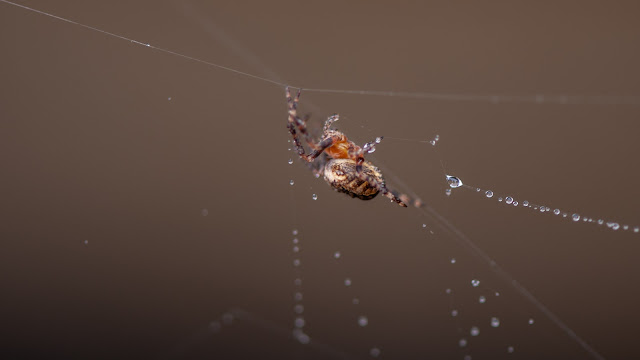who'd have thunk it
Regular readers of this blog will by now no doubt be aware that I started using a Raynox maginifying lens attached to my macro lens to get even closer to my subjects. The results, though sometimes complex to achieve, can be stunning.
But I don’t always have my camera and macro lens with me when I go out. I do always have my phone though – an iPhone 15 Pro Max.
Firstly, the resolution is lower, 12megapixels compared to the main camera’s 48, and also you can only record jpeg files at that lower resolution and not the full-fat raw or DNG alternative.
This is leading somewhere, trust me!
A number of years ago, my daughter bought me a lovely Christmas gift comprising three “lenses” that could be clipped onto to my phone – a fisheye, wide-angle and macro. After using them for a while I put them away in a drawer where they remained until last week.
I figured I’d try them out on my latest phone and was blown away by the macro images I managed to get – all at a full, lovely 48 megapixels and in DNG format making cropping and processing another doddle.
Here are just a couple of those shots:
 |
| iPhone 15 Pro Max (main camera) 1/640th 0f a second at f1.8, ISO 100 handheld |
 |
| iPhone 15 Pro Max (main camera) 1/640th 0f a second at f1.8, ISO 100 handheld |
 |
| iPhone 15 Pro Max (main camera) 1/950th 0f a second at f1.8, ISO 100 handheld |
I was literally stunned at the quality of the images produced. But, just like the Raynox attachment this little adapted lens does pose a problem - that razor thin depth of field meaning that only a sliver of the image is in pin-sharp focus.
With a larger camera and lens attached to a tripod this can be overcome by focus bracketing and then blending the images later. This can be achieved on a phone by shooting a rapid burst of images while slowly moving the phone to capture a number of focal points. That though defeats the object for me. This attachment is excellent at what it does as long as you accept its limitations you can easily create some really quite stunning and genuine macro images.
If you'd like to see more, then there's this video:


Comments
Post a Comment